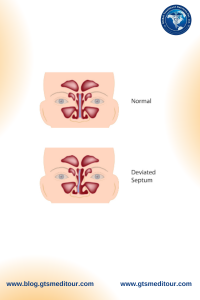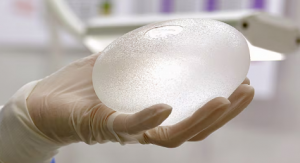Overview
Facial palsy is a condition in which the muscles in your face become weakened or paralyzed due to injury or disease. It usually affects one side of your face, causing it to droop or suddenly become stiff. resulting from some kind of trauma to the seventh cranial nerve, which controls your facial muscles. it causes difficulty in blinking, smiling, eating, drinking and speaking. Facial palsy can happen to anyone, it mostly affects people aged 15-60 years. It affects men and women equally. These patients often face psychological and social challenges and being treated as unfriendly and uninterested due to their appearance which can lead to chronic anxiety, isolation, least interested in daily activities, fear of negative reaction etc…There are definitive treatments available for facial palsy, depending on the duration of the disease. facial palsy treatment requires multi disciplinary approach like – plastic surgeon, ophthalmologist, oculoplastic surgeon, physiotherapist, speech therapist and clinical psychologist. Treatment always depends on several factors with most important being the time since the injury ha s occurred, if it has been 6months to a year old injury simple operations like nerve repair and nerve transfer are appropriate treatments yielding good results otherwise, it may require multiple treatments with physiotherapy as a crucial aspect of treatment.

Facial palsy vs stroke
If you have symptoms of facial palsy, you might be afraid you’re having a stroke. Both can cause single-sided facial paralysis and have similar symptoms, such as trouble closing your eye or drooping on one side of your face. But there are significant differences.
For example, if the eye on your paralyzed side is watering or you have sensitive hearing or ringing in your ear, it’s likely Bell’s palsy. Changes in your sense of taste are also signs of Bell’s palsy.
But if you feel numbness or weakness in your arms or legs on one side of your body, it could be a stroke. With Facial palsy, you shouldn’t feel weak or have trouble moving your tongue.
Whatever symptoms you’re having, if you suddenly have trouble moving one side of your face, get medical attention right away.
Causes
Although the exact reason facial /Bell’s palsy occurs isn’t clear, it’s often related to having a viral infection. Viruses that have been linked to Facial/Bell’s palsy include viruses that cause:
- Cold sores and genital herpes, also known as herpes simplex.
- Chickenpox and shingles, also known as herpes zoster.
- Infectious mononucleosis, caused by the Epstein-Barr virus.
- Cytomegalovirus infections.
- Respiratory illnesses, caused by adenoviruses.
- German measles, also known as rubella.
- Mumps, caused by the mumps virus.
- Flu, also known as influenza B.
- Hand-foot-and-mouth disease, caused by a coxsackievirus.
Symptoms
The onset of your symptoms may be sudden or may appear over two or three days. Alternatively your symptoms may develop slowly over time (over weeks, or even months).
- Mild weakness to total paralysis on one side of the face — occurring within hours to days.
- Facial droop and trouble making facial expressions, such as closing an eye or smiling.
- Drooling.
- Pain around the jaw or pain in or behind the ear on the affected side.
- Increased sensitivity to sound on the affected side.
- Headache.
- Loss of taste.
- Changes in the amount of tears and saliva produced.
Diagnosis
There’s no specific test for Bell’s palsy. Your healthcare professional looks at your face and asks you to move your facial muscles. You’re asked to close your eyes, lift your brow, show your teeth and frown, among making other movements.
Other conditions — such as a stroke, infections, Lyme disease, inflammatory conditions and tumors — can cause facial muscle weakness that mimics Bell’s palsy. If the cause of your symptoms isn’t clear, your healthcare professional may recommend other tests, including:
- Electromyography (EMG).
- Imaging Scans (MRI, CT scan)
- Blood tests
Treatment
If you have Facial palsy, you’re likely to make a full recovery even if you don’t get treatment. But there are some things that may help you heal faster.
- Corticosteroids (such as prednisone). These can help ease swelling of your facial nerve and help it start working normally faster. Corticosteroids work best if you take them soon after the start of your symptoms.
- Antiviral drugs. Antiviral medications are sometimes prescribed in combination with corticosteroids, typically in severe cases of Facial palsy. They don’t seem to have much effect when they’re taken alone.
- Eye drops. If your Facial palsy affects your ability to blink and close your eye, use eye drops or an ointment to keep it moist. Wear an eye patch to keep dirt and dust out and moisture in.
- Surgery. Surgery is usually a last resort if your symptoms don’t go away, or if you have complications.
Facial palsy therapy
Physiotherapy may help strengthen your facial muscles and help you get back facial coordination. You can also try massaging your face with your fingertips or exercising your facial muscles. Try to move every part of your face gently and slowly, using your fingers to help.
Conclusion
Most people with Facial palsy completely recover, sometimes the symptoms are permanent. and you may have long-term effects, such as – lopsided face, crooked smile, tightness of facial or neck muscle, narrowed eye etc.. But it’s not serious and usually clears up with early and appropriate treatments in a few months.
So, we GTS is always available 24/7 at your service to assist and guide you with the right speciality of doctors and everything in case you or your loved ones unfortunately encounter any type major disease which may require therapies and surgery.
You can connect us at query@gtsmeditour.com or WhatsApp us on +91 9880149003 for an free second opinion from major hospitals like Apollo hospitals, Manipal Hospitals, Aster Hospitals.
Thank you..!







